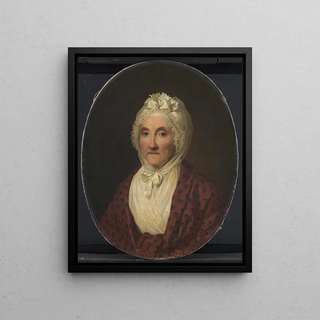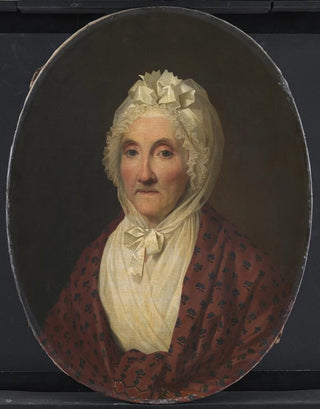Art print | Veuve de Brandvinsbrender Bagge - Jens Juel


View from behind

Frame (optional)
Veuve de Brandvinsbrender Bagge - Jens Juel – Captivating Introduction
The painting "Veuve de Brandvinsbrender Bagge" by Jens Juel is a work that transcends a simple portrait to capture the very essence of the human condition in the 18th century. This delicate depiction of a mourning woman, imbued with melancholy and dignity, offers a poignant glimpse into the emotions and social conventions of her time. The scene, bathed in soft, natural light, invites the viewer to immerse themselves in a universe where sadness and beauty coexist harmoniously. Through this artwork, Juel succeeds in conveying a personal story while evoking a universal feeling of loss, making it an essential piece for anyone interested in art and history.
Style and uniqueness of the work
Jens Juel's style is distinguished by its realistic and sensitive approach. In "Veuve de Brandvinsbrender Bagge," every detail is carefully crafted, from the folds of the clothing to the subtle expressions on the face. The color palette, dominated by soft and earthy tones, enhances the contemplative atmosphere of the piece. Juel excels in the art of capturing light, creating a depth that brings the portrait to life. The composition, focused on the figure of the widow, immediately draws the eye and fosters an emotional connection with the viewer. This artwork is much more than a simple representation; it is an exploration of human feelings, a reflection of social norms, and a testament to the undeniable talent of the artist.
The artist and his influence
Born in 1745, Jens Juel marked his era with his ability to fuse realism and romanticism in his works. His artistic journey led him to become one of the most prominent portraitists of his time, notably at the Danish court. Juel was able to capture the essence of his subjects, elevating them beyond their social status to present them as individuals with unique emotions and stories. His influence extends far beyond his time, inspiring many artists who followed his path. By incorporating elements of daily life and human emotions into his works, Juel paved the way for a new way of conceptualizing the portrait, where the psychology of the characters

Matte finish

View from behind

Frame (optional)
Veuve de Brandvinsbrender Bagge - Jens Juel – Captivating Introduction
The painting "Veuve de Brandvinsbrender Bagge" by Jens Juel is a work that transcends a simple portrait to capture the very essence of the human condition in the 18th century. This delicate depiction of a mourning woman, imbued with melancholy and dignity, offers a poignant glimpse into the emotions and social conventions of her time. The scene, bathed in soft, natural light, invites the viewer to immerse themselves in a universe where sadness and beauty coexist harmoniously. Through this artwork, Juel succeeds in conveying a personal story while evoking a universal feeling of loss, making it an essential piece for anyone interested in art and history.
Style and uniqueness of the work
Jens Juel's style is distinguished by its realistic and sensitive approach. In "Veuve de Brandvinsbrender Bagge," every detail is carefully crafted, from the folds of the clothing to the subtle expressions on the face. The color palette, dominated by soft and earthy tones, enhances the contemplative atmosphere of the piece. Juel excels in the art of capturing light, creating a depth that brings the portrait to life. The composition, focused on the figure of the widow, immediately draws the eye and fosters an emotional connection with the viewer. This artwork is much more than a simple representation; it is an exploration of human feelings, a reflection of social norms, and a testament to the undeniable talent of the artist.
The artist and his influence
Born in 1745, Jens Juel marked his era with his ability to fuse realism and romanticism in his works. His artistic journey led him to become one of the most prominent portraitists of his time, notably at the Danish court. Juel was able to capture the essence of his subjects, elevating them beyond their social status to present them as individuals with unique emotions and stories. His influence extends far beyond his time, inspiring many artists who followed his path. By incorporating elements of daily life and human emotions into his works, Juel paved the way for a new way of conceptualizing the portrait, where the psychology of the characters






